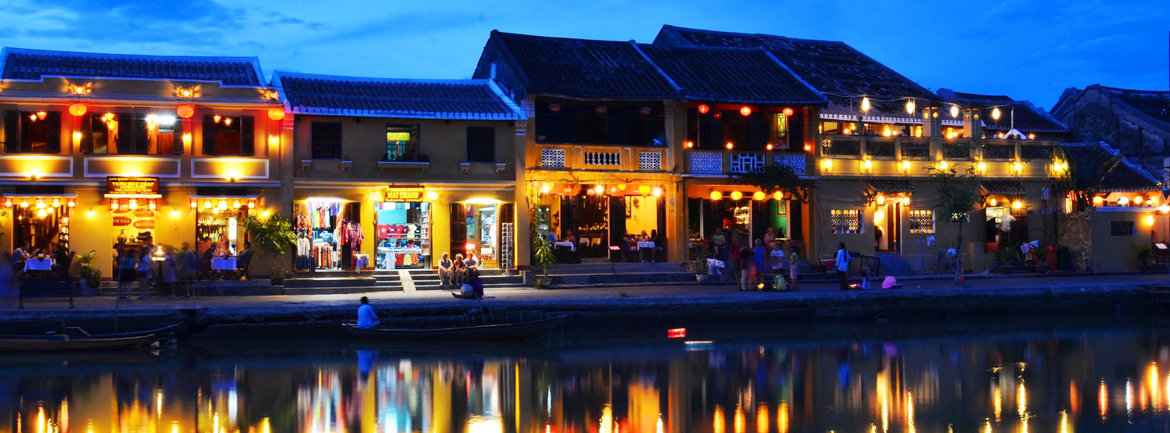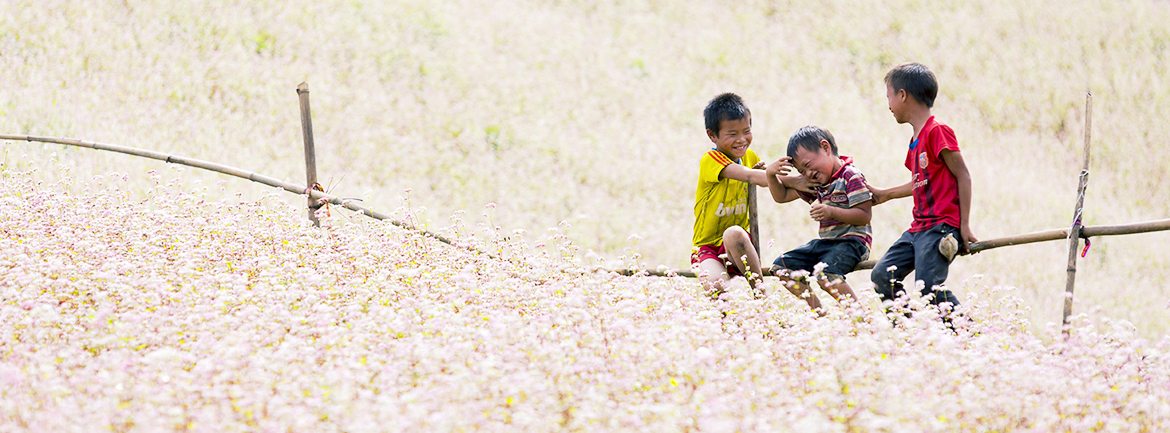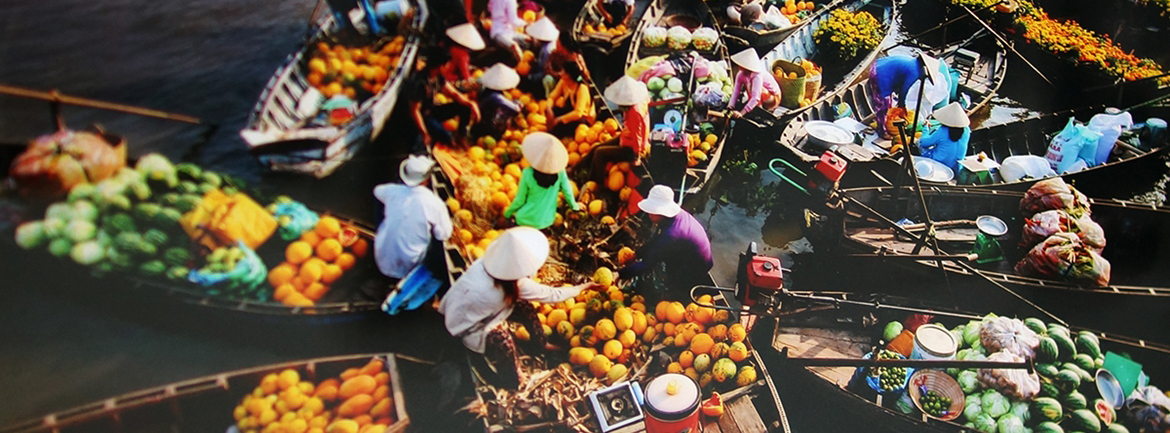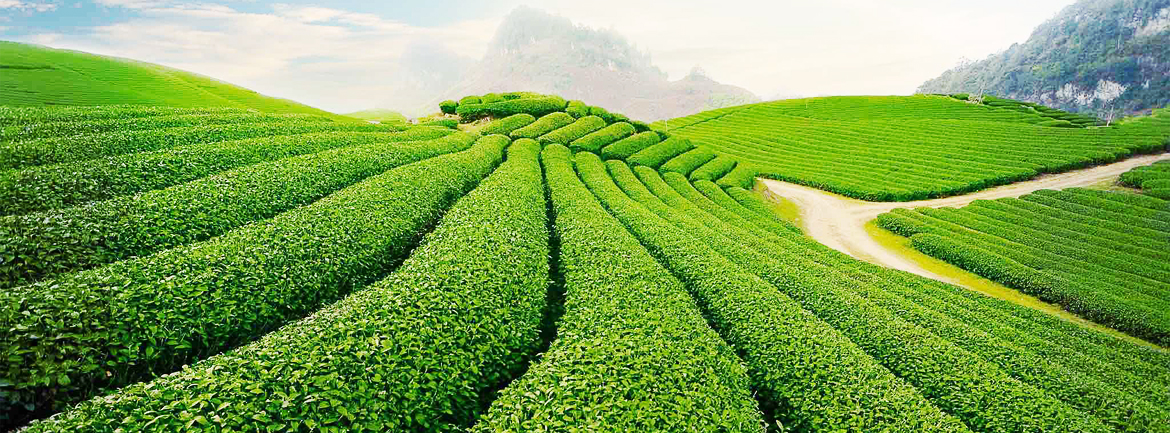VIET NAM
Situated in the Southeast of Asia, Vietnam is a remarkable destination for all travelers who like to discover Asia. Its mountains, various different landscapes, magnificent beaches, traditions and diverse cultures are only a few reasons to visit this beautiful country. Vietnam possesses countless tourist assets to be discovered, always accompanied by welcoming and smiling inhabitants.
The North
The North of Vietnam divides in 3 main regions: the Northeast, Northwest and the Red River Delta. Known as the cradle of the Vietnamese history, the North concentrates the majority of the numerous cultures and civilizations of the Vietnamese ethnic groups.
Places of interest in the North :
In the Northwest :
-
Sapa – Lao Cai: This area is situated in 1600m altitude above sea level. The average temperature varies from 15 to 18 degrees. The climate is constantly fresh and moderate all year round. In Sapa, tourists can visit the ethnic villages of the H’Mong, Ha Nhi, Dzay and many more that live in the terrace rice field areas.
-
The Moc Chau plateau – Son La: The plateau attracts photographers who like fields of flowers on the side of mountains and shelters numerous places of interest, for example the cave of Son Moc Huong, the waterfall of Dai Yem, the cultural villages of the Hmong and Dzao with its tea fields, plum gardens and a lot more.
-
The Pha Ðin peak: It is classified as one of the most beautiful peaks in the Northwest.
In the Northeast :
-
The Dông Van plateau - Ha Giang: The geopark of Dông Van is one of the two geoparks in Southeast-Asia and consists by about 80 percent of limestone and ancient fossils from 400 - 600 million years ago.
-
The My Pi Leng peak is also one of the most beautiful mountain peaks in Vietnam, where one can have a great view of hidden valleys and the typical roofs of H’Mong houses.
-
The Ba Be lake, nicknamed "The Halong Bay of the mountains".
-
The waterfall of Ban Gioc is one of the ten most beautiful waterfalls of the planet, which is situated right at the border of Vietnam and China.
-
The cave of Nguom Ngao, which is situated in a calcareous mountain area with subterranean parts and parts left under the water.
In the Red River Delta :
-
The famous Halong Bay is classified as world heritage by the UNESCO since 1994. It includes around 1,600 islands, forming a spectacular seascape of limestone pillars. Because of their precipitous nature, most of the islands are uninhabited and unaffected by human presence. The site's outstanding scenic beauty is complemented by its great biological interest.
-
The national park of Cuc Phuong was Vietnam’s first national park and is the country’s largest nature reserve. It is also one of the places in Vietnam with the highest biodiversity.
The Center
Known under the name "An Nam" in the French colonial period, the Center is lined on the West by the mountain range which forms the natural boundary with Laos and in the East with the Chinese sea. Several natural, historic and cultural heritage sites are classified by the UNESCO and are situated in this region. Besides, possessing the most beautiful coastal line of Vietnam, the Center is also an ideal destination for beach holidays.
Places of interest in the Center :
-
Hué, the former imperial capital of Vietnam centralizes the aristocratic culture of the Nguyen dynasty.
-
In the Phong Nha-Ke Bang national park, there are the Thiên-Đường cave (Paradise cave) and the Phong Nha cave which is also considered as UNESCO world natural heritage.
-
Hoi An is classified cultural heritage of the UNESCO, is an old town which is a mixture of native and foreign cultures (mainly Chinese and Japanese and, more lately, also European).
-
Nha Trang is well known for its beaches and scuba diving and has developed into a popular destination for international and Vietnamese tourists, with Nha Trang Bay widely considered as among the world's most beautiful bays.
-
The Highlands, Buon Me Thuot, is a region famous for its coffee plantations.
The South
The South is characterized by fertile land operated by its open and friendly locals that are living in symbiosis with the rivers and nature. Its typical cultural feature is the presence of the floating markets of the Mekong River where all kinds of fruits, vegetables, and other products grown on its rich and fertile land are exchanged.
Places of interst in the South :
-
The Mekong Delta with the floating markets of Cai Rang and the city of Can Tho. Also fruit gardens, boat rides on small rivers bordered by villages and lush orchards are things not to miss.
-
Phu Quoc, the emerald island, is one of the most beautiful islands in Vietnam, Tourists have the opportunity to lie on sun loungers by the sea and participate in water activities at the resorts











